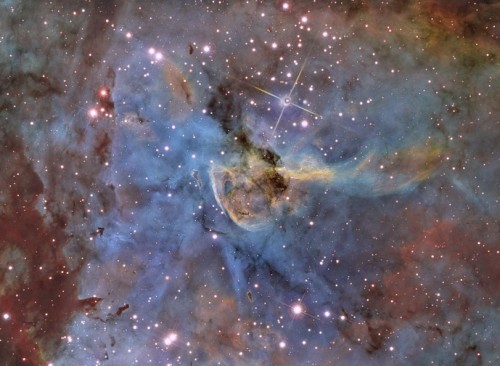samstein1012
Elon Musk,Electric Cars,MIT, Spacex, NASA, Tesla and Taylor Alison Swift
34 posts
Latest Posts by samstein1012
We have been expecting you Mr Handle......




There are some that fly an airplane, and there are those who become one with the air and machine. Sad news today. Bob Hoover passed away at the age of 94. A stick and rudder pilot for the ages. I met and got an autograph back in the late 1990s. A class act all the way. Mr. Hoover brought flying to an artistic level. RIP Mr. Hoover, you took to the skies, dazzling and inspiring so many. We mourn his loss, and celebrate a life.
Robert A. “Bob” Hoover (January 24, 1922 - October 25, 2016)
http://www.flyingmag.com/aviation-legend-bob-hoover-dies-at-94








Full video: Stephen Colbert Helps President Obama Polish Up His Résumé

Pluto in Combined Color
What is fascinating about Pluto is how young its surface is. We can see some canyons, planes, and mountains in this image - which is an indication of a young surface. This image of Pluto was taken when the New Horizons spacecraft was only 280,000 miles away from the surface. In the image you can see features as small as 1.4 miles! Four images from New Horizons’ Long Range Reconnaissance Imager (LORRI) were combined with color data from the Ralph instrument to create this enhanced color global view.
Credit: John’s Hopkin’s APL/NASA JPL
Living and Working Aboard Station
Join us on Facebook Live for a conversation with astronaut Kate Rubins and the director of the National Institutes for Health on Tuesday, October 18 at 11:15 a.m. ET.
Astronaut Kate Rubins has conducted out of this world research aboard Earth’s only orbiting laboratory. During her time aboard the International Space Station, she became the first person to sequence DNA in space. On Tuesday, she’ll be live on Facebook with National Institute of Health director Francis Collins, who led the effort to map the human genome. You can submit questions for Kate using the hashtag #SpaceChat on Twitter, or during the live event. Here’s a primer on the science this PhD astronaut has been conducting to help inspire your questions:

Kate has a background in genomics (a branch of molecular genetics that deals with the study of genomes,specifically the identification and sequencing of their constituent genes and the application of this knowledge in medicine, pharmacy,agriculture, and other fields). When she began her tenure on the station, zero base pairs of DNA had been sequenced in space. Within just a few weeks, she and the Biomolecule Sequencer team had sequenced their one billionth base of DNA aboard the orbital platform.
“I [have a] genomics background, [so] I get really excited about that kind of stuff,” Rubins said in a downlink shortly after reaching the one billion base pairs sequenced goal.
Learn more about this achievement:
+First DNA Sequencing in Space a Game Changer
+Science in Short: One Billion Base Pairs Sequenced
Why is DNA Sequencing in Space a Big Deal?
A space-based DNA sequencer could identify microbes, diagnose diseases and understand crew member health, and potentially help detect DNA-based life elsewhere in the solar system.
+Why Sequencing DNA in Space is a Big Deal
https://youtu.be/1N0qm8HcFRI
Miss the Reddit AMA on the subject? Here’s a transcript:
+NASA AMA: We just sequenced DNA in space for the first time. Ask us anything!
NASA and Its Partnerships

We’re not doing this alone. Just like the DNA sequencing was a collaborative project with industry, so is the Eli Lilly Hard to Wet Surfaces investigation, which is a partnership between CASIS and Eli Lilly Co. In this experiment aboard the station, astronauts will study how certain materials used in the pharmaceutical industry dissolve in water while in microgravity. Results from this investigation could help improve the design of tablets that dissolve in the body to deliver drugs, thereby improving drug design for medicines used in space and on Earth. Learn more about what we and our partners are doing:
+Eli Lilly Hard to Wet Surfaces – been happening the last week and a half or so
Researchers to Test How Solids Dissolve in Space to Design Better Tablets and Pills on Earth
With our colleagues at the Stanford University School of Medicine, we’re also investigating the effects of spaceflight on stem cell-derived heart cells, specifically how heart muscle tissue, contracts, grows and changes in microgravity and how those changes vary between subjects. Understanding how heart muscle cells change in space improves efforts for studying disease, screening drugs and conducting cell replacement therapy for future space missions. Learn more:
+Heart Cells
+Weekly Recap From the Expedition Lead Scientist for Aug. 18, 2016
It’s Not Just Medicine

Kate and her crew mates have also worked on the combustion experiments.
Kate has also worked on the Bigelow Expandable Activity Module (BEAM), an experimental expandable capsule that docks with the station. As we work on our Journey to Mars, future space habitats are a necessity. BEAM, designed for Mars or other destinations, is a lightweight and relatively simple to construct solution. Kate has recently examined BEAM, currently attached to the station, to take measurements and install sensors.

Kate recently performed a harvest of the Plant RNA Regulation experiment, by removing seed cassettes and stowing them in cold stowage.

The Plant RNA Regulation investigation studies the first steps of gene expression involved in development of roots and shoots. Scientists expect to find new molecules that play a role in how plants adapt and respond to the microgravity environment of space, which provides new insight into growing plants for food and oxygen supplies on long-duration missions. Read more about the experiment:
+Plant RNA Harvest
NASA Astronaut Kate Rubins is participating in several investigations examining changes in her body as a result of living in space. Some of these changes are similar to issues experienced by our elderly on Earth; for example, bone loss (osteoporosis), cardiovascular deconditioning, immune dysfunction, and muscle atrophy. Understanding these changes and how to prevent them in astronauts off the Earth may help improve health for all of us on the Earth. In additional, the crew aboard station is also working on more generalized studies of aging.
+ Study of the effects of aging on C. elegans, a model organism for a range of biological studies.

Nearly two years after a privately built Antares rocket crashed and exploded, the booster's builder Orbital ATK is ready to return to flight. Tonight (Oct. 16), an upgraded version of the Antares rocket will soar into the sky above Virginia's Eastern Shore, a nightttime launch that could be visible to potentially millions of observers up and down the U.S. East Coast, weather permitting. The Antares rocket will launch Orbital ATK's Cygnus spacecraft on a NASA cargo delivery mission to the International Space Station. Liftoff is set for 8:03 p.m. EDT (0003 Oct. 17 GMT) from Pad-0A of the Mid-Atlantic Regional Spaceport at NASA's Wallops Flight Facility on Wallops Island, Virginia. You can watch a webcast of the launch herebeginning at 7 p.m. EDT (2300 GMT), courtesy of NASA TV. Advertisemen

When magnetic ferrofluid comes in contact with a magnetic object, it becomes a moving sculpture that reflects the shape of the object’s magnetic field. Source

NASA tested new “eyes” for its next Mars rover mission on a rocket built by Masten Space Systems in Mojave, California, thanks in part to NASA’s Flight Opportunities Program, or FOP.
The agency’s Jet Propulsion Laboratory in Pasadena, California, is leading development of the Mars 2020 rover and its Lander Vision System, or LVS. In 2014, the prototype vision system launched 1,066 feet (325 meters) into the air aboard Masten’s rocket-powered “Xombie” test platform and helped guide the rocket to a precise landing at a predesignated target. LVS flew as part of a larger system of experimental landing technologies called the Autonomous Descent and Ascent Powered-flight Testbed, or ADAPT.
LVS, a camera-based navigation system, photographs the terrain beneath a descending spacecraft and matches it with onboard maps allowing the craft to detect its location relative to landing hazards, such as boulders and outcroppings.
The system can then direct the craft toward a safe landing at its primary target site or divert touchdown toward better terrain if there are hazards in the approaching target area. Image matching is aided by an inertial measurement unit that monitors orientation.
The Flight Opportunities Program funded the Masten flight tests under the Space Technology Mission Directorate. The program obtains commercial suborbital space launch services to pursue science, technology and engineering to mature technology relevant to NASA’s pursuit of space exploration. The program nurtures the emerging suborbital space industry and allows NASA to focus on deep space.
Andrew Johnson, principal investigator in development of the Lander Vision System development, said the tests built confidence that the vision system will enable Mars 2020 to land safely.
“By providing funding for flight tests, FOP motivated us to build guidance, navigation and control payloads for testing on Xombie,” Johnson said. “In the end we showed a closed loop pinpoint landing demo that eliminated any technical concerns with flying the Lander Vision System on Mars 2020.”
According to “Lander Vision System for Safe and Precise Entry Descent and Landing,” a 2012 abstract co-authored by Johnson for a Mars exploration workshop, LVS enables a broad range of potential landing sites for Mars missions.
Typically, Mars landers have lacked the ability to analyze and react to hazards, the abstract says. To avoid hazards, mission planners selected wide-open landing sites with mostly flat terrain. As a result, landers and rovers were limited to areas with relatively limited geological features, and were unable to access many sites of high scientific interest with more complex and hazardous surface morphology. LVS will enable safe landing at these scientifically compelling Mars landing sites.
An LVS-equipped mission allows for opportunities to land within more challenging environments and pursue new discoveries about Mars. With LVS baselined for inclusion on Mars 2020, the researchers are now focused on building the flight system ahead of its eventual role on the Red Planet.
To learn more about NASA’s flight opportunities program, visit:
https://flightopportunities.nasa.gov/
To read more about NASA’s Mars 2020 rover, visit:
http://mars.nasa.gov/mars2020/





For more on the Fermi Paradox and why alien life hasn’t found us yet. (Infographic via futurism)
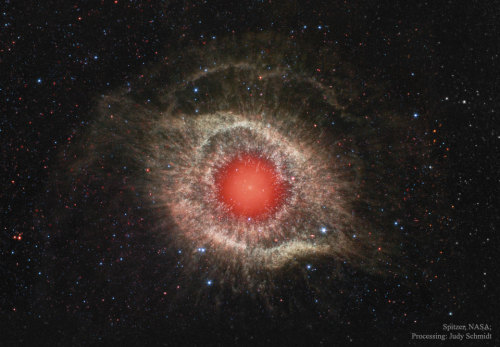
Helix Nebula // NGC 7293

ABRACADABRA (A Broadband/Resonant Approach to Cosmic Axion Detection with an Amplifying B-field Ring Apparatus), consists of a series of magnetic coils, wound in the shape of a toroid, or donut, which is then encased in a layer of superconducting metal and kept at temperatures just above absolute zero. The scientists plan to use a highly sensitive magnetometer, placed inside the donut hole, to detect any signs of axions’ influence. MIT physicists are proposing a new experiment to detect a dark matter particle called the axion. If successful, the effort could crack one of the most perplexing unsolved mysteries in particle physics, as well as finally yield a glimpse of dark matter. Axions are hypothetical elementary particles that are thought to be among the lightest particles in the universe — about one-quintillionth the size of a proton. These ultralight particles are virtually invisible, yet if they exist, axions and other yet-unobserved particles may make up 80 percent of the material in the universe, in the form of dark matter. In a paper published online in Physical Review Letters, the MIT team proposes an experiment to detect axions by simulating an extreme astrophysical phenomenon known as a magnetar — a type of neutron star that generates an immensely powerful magnetic field. The physicists reasoned that in the presence of an axion such a huge magnetic field should waver ever so slightly, producing a second, vastly smaller magnetic field as a signature of the axion itself. The team consists of MIT associate professor of physics Jesse Thaler, MIT Pappalardo Fellow Benjamin Safdi, and Yonatan Kahn PhD ’15, now a postdoc at Princeton University. Together, they designed an experiment to recreate the physics of a magnetar in a controlled laboratory environment, using technology borrowed from magnetic resonance imaging (MRI). The core of the experiment, which they’ve named ABRACADABRA (A Broadband/Resonant Approach to Cosmic Axion Detection with an Amplifying B-field Ring Apparatus), consists of a series of magnetic coils, wound in the shape of a toroid, or donut, which is then encased in a layer of superconducting metal and kept in a refrigerator at temperatures just above absolute zero, to minimize external noise. The scientists plan to use a highly sensitive magnetometer, placed inside the donut hole, to detect any signs of axions’ influence. “Axions are very strange, counterintuitive particles,” Thaler says. “They’re extremely light, with feeble interactions, and yet this particle may dominate the matter budget of the universe and be five times more abundant by mass than ordinary matter. So we really had to think hard on whether these particles are in principle detectable using current technology. It’s extremely daunting.” A “tantalizing” particle If they are detected, axions may also explain an outstanding dilemma in particle physics, known as the Strong CP (charge parity) problem: Since the 1970s, scientists have grown increasingly puzzled over what Safdi describes as “the indifference of neutrons to electric fields.” Neutrons are elementary particles that are found in the nucleus of almost every atom in matter, and they do not carry a net charge. “We don’t expect neutrons to accelerate in the presence of an electric field because they don’t carry electric charge, but you might expect them to rotate,” Safdi says. “That’s because we expect them to have an electric dipole moment, where you can think of a neutron having a plus charge on one side and a minus charge on the other. But from our current understanding, this rotation effect does not exist, whereas theory says it should.” Scientists have hypothesized that this bizarre effect may be explained by the axion, which would somehow remove a neutron’s electric dipole moment. If so, the axion would modify electric and magnetic phenomena in a way that could be detectable experimentally. “It’s very tantalizing to say there might be a particle that serves this deep purpose, and even more so if we were to detect the presence of these particles in the form of dark matter,” Thaler says. The hunt is on Currently, Thaler says most axion hunting has been carried out by researchers at the University of Washington who are running the Axion Dark Matter Experiment, or ADMX. The experiment uses a resonant microwave cavity, set within a large superconducting magnet, to detect very weak conversions of axions to microwave photons. The experiment is tuned to look for axions within a specific range of around one quadrillionth the mass of a proton. Thaler and his team realized that they could extend this range, and look for much smaller, lighter particles, on the order of one quintillionth the mass of a proton, by recreating the physics of magnetars, in the lab. “The Strong CP problem is associated with whether a neutron’s spin responds to electric effects, and you can kind of think of a magnetar as one gigantic spin with big magnetic fields,” Thaler explains. “If axions are coming in and changing the properties of nuclear matter to resolve the Strong CP problem, maybe axions can interact with this magnetar and allow you to see it in a new way. So the subtle effects of axions should be amplified.” The team’s prototype design is surprisingly small — “about the palm of your hand,” Safdi says. The researchers, who are theoretical physicists by training, are now working with experimentalists at MIT to build the prototype, which is designed to generate a baseline magnetic field of about 1 tesla, comparable to current MRI machines. If axions are present, that field should waver slightly, producing a very tiny oscillation at a frequency that is directly related to the axion’s mass. Using a high-precision magnetometer, Thaler hopes to pick up that frequency and ultimately use it to identify the axion’s size. “Only recently have there been many good ideas to search for [low-frequency axions],” says Gray Rybka, an assistant professor of physics at the University of Washington and an ADMX researcher, who was not involved in the research. “The experiment proposed here builds on previous ideas and, if the authors are correct, may be the most practical experimental configuration that can explore some of the plausible lower-frequency axion regimes.” “We have an instrument that’s sensitive to many wavelengths, and we can tickle it with an axion of one particular wavelength, and ABRACADABRA will resonate,” Thaler says. “And we will be going into uncharted territory, where we could possibly see dark matter from this prototype. That would be amazing.” This research was supported, in part, by the U.S. Department of Energy and the Alfred P. Sloan Foundation.



Is Proxima b another Earth? It’s difficult to answer because no one has actually “seen” this distant planet which orbits the red dwarf star Proxima Centauri right in theGoldilocks Zone. Scientists have merely concluded that Proxima b (which is about 4.2 light years away from Earth) is right where it should be, by observing the regular, subtle changes in Proxima Centauri’s color. Proxima b is tidally locked to its star — which means one side of it is always facing Proxima Centauri, and the other side is perpetually dark. With just an 11.2-year revolution, it lies very close to its star, although red-dwarf stars are not as hot as yellow-dwarves (like our Sun). There is a possibility that water exists on Proxima b, and that it has an atmosphere protecting it from extreme heat, and scattering heat even to its dark side. How can we be sure? Harvard’s Avi Loeb and astronomer Laura Kreidberg propose that we use NASA’s James Webb Space Telescope (JWST). UNCERTAINTIES The long-delayed JWST is set to launch by 2018 (originally 2011). Loeb explains that if a rocky planet, like Proxima b, has an atmosphere, it would absorb light from its star and re-emit it as infrared light. Incidentally, the JWST is specifically designed to observe infrared light. The JWST can take photos of infrared light on the surface Proxima b, looking for patterns that would confirm whether or not this exoplanet has water or is covered by an atmosphere. Things aren’t so simple, however. The proposed method may be doable. But there are other factors that have to be considered. For instance, the existence of an atmosphere may not guarantee life, says astrophysicist Ed Turner of Princeton University. Proxima b may be like Venus, with an atmosphere 90 times thicker than ours, and extreme heat. Still, Loeb’s and Kriedberg’s plan is the only option we have for a glimmer of an answer about this “Earth next-door”. References: Business Insider, Scientific American
6 Ways Earth Observations Tackle Real-World Problems
This summer, 30 research projects were launched by recent college graduates and early career professionals as part of our DEVELOP program. The aim is to use our satellite observations of Earth to address an environmental or public policy issue. And they have just 10 weeks to do it! On Aug. 10, 2016, the “DEVELOPers” gathered at our Headquarters in Washington, DC to showcase their results. So, how can Earth observations solve real-world problems? Let’s take a look:

1. They help land managers identify the locations of invasive species.
Austin Haney, DEVELOP project co-lead at University of Georgia, has seen first-hand how an invasive species can affect the ecosystem of Lake Thurmond, a large reservoir that straddles the border between Georgia and South Carolina. Birds in the area “behave visibly different,” he said, after they consume a toxic cyanobacteria that lives on Hydrilla verticillata, an invasive aquatic plant. Ingesting the toxin causes a neurodegenerative disease and ultimately death. Scores of birds have been found dead near lake areas where large amounts of the toxin-supporting Hydrilla grow. To help lake managers better address the situation, Haney and project members developed a tool that uses data from the Landsat 8 satellite to map the distribution of Hydrilla across the lake.
Image Credit: NASA/Bill Ingalls

2. They help identify wildlife habitat threatened by wildfires.
Maps that depict habitat and fire risk in eastern Idaho previously stopped short of Craters of the Moon National Monument and Preserve, where shrubs and grasses transition to a sea of ankle-twisting basalt. But the environment is not as inhospitable as it first appears. Throughout the monument there are more than 500 kipukas —pockets of older lava capable of supporting some vegetation. That means it is also prone to burning. Project lead Courtney Ohr explained how her team used data from the Landsat 8 and Sentinel-2 satellites to develop a model that can simulate the area’s susceptibility to wildfires. Decision makers can use this model to monitor the remote wildlife habitat from afar.
Image Credit: NASA/Bill Ingalls

3. In conjunction with Instagram, they help find seaweed blooms
Who knew that Instagram could be a tool for science? One DEVELOP team searched for photographs of massive seaweed (sargassum) blooms in the Caribbean, mapped the locations, and then checked what satellites could see. In the process, they tested two techniques for finding algae and floating vegetation in the ocean.
Image Credit: Caribbean Oceans Team

4. They help conserve water by reducing urban stormwater runoff.
Atlanta’s sewer system is among the nation’s most expensive. Yet, the city still struggles with stormwater. It’s an uphill climb as new construction paves over more of the city, hindering its ability to absorb rain. The University of Georgia DEVELOP team partnered with The Nature Conservancy to address the problem.
Using satellite imagery, the team was able to pinpoint areas well-poised to capture more of the city’s runoff. They identified 17 communities ripe for expanding green infrastructure and reforestation. The team used the Land-Use Conflict Identification Strategy and Soil and Water Assessment Tool models and Landsat and Terra satellite data. Their analysis provides local groups with a working picture of the city’s water resources.
Image Credit: NASA/Bill Ingalls

5. They show the spread of the mite eating away Puerto Rico’s palm trees.
The red palm mite has devastated Puerto Rico’s trees in recent years. The insect chewed its way through coconut palms, bananas, and plantains on the island in the recent decade. Its spread has hurt crops across the Caribbean.
A DEVELOP team led by Sara Lubkin analyzed satellite imagery to track the mites’ rapid spread from 2002. The team mapped changes to vegetation, such as yellowing, and differences in canopy structure. They made use of imagery from Landsat, Hyperion, IKONOS, and aerial views. Their work can be used to mitigate current mite infestations and monitor and prevent future ones.
Image Credit: NASA/Bill Ingalls

6. They evaluate landslide-prone areas in the developing world
One team of DEVELOPers took on several projects to aid people in developing nations. This team from Alabama examined satellite imagery to find past landslides in the African nation of Malawi. Factors such as flooding after long periods of drought have made the country increasingly prone to landslides. Blending maps of the landscape, rainfall data, and population centers, the young researchers assessed the areas most at risk—and most in need of education and support—from landslides.
Image Credit: East Africa Disasters II Team
Want to read more about DEVELOP projects, or get involved? Summaries, images, and maps of current and past projects can be viewed HERE. You can also learn how to apply for the DEVELOP program HERE.
Make sure to follow us on Tumblr for your regular dose of space: http://nasa.tumblr.com
Space Station Science: Biological Research

Each month, we highlight a different research topic on the International Space Station. In August, our focus is biological research. Learning how spaceflight affects living organisms will help us understand potential health risks related to humans on long duration missions, including our journey to Mars.

Cells, microbes, animals and plants are affected by microgravity, and studying the processes involved in adaptation to spaceflight increases our fundamental understanding of biological processes on Earth. Results on Earth from biological research in space include the development of new medications, improved agriculture, advancements in tissue engineering and regeneration, and more.
Take a look at a few of the biological research experiments performed on space station:
Biomolecule Sequencer

Living organisms contain DNA, and sequencing DNA is a powerful way to understand how they respond to changing environments. The Biomolecule Sequencer experiment hopes to demonstrate (for the first time) that DNA sequencing is feasible in an orbiting spacecraft. Why? A space-based DNA sequencer could identify microbes, diagnose diseases and understand crew member health, and potentially help detect DNA- based life elsewhere in the solar system.
Ant-stronauts

Yes, ant-stronauts…as in ants in space. These types of studies provide insights into how ants answer collective search problems. Watching how the colony adapts as a unit in the quest for resources in extreme environments, like space, provides data that can be used to build algorithms with varied applications. Understanding how ants search in different conditions could have applications for robotics.
TAGES

The TAGES experiment (Transgenic Arabidopsis Gene Expression System) looks to see how microgravity impacts the growth of plant roots. Fluorescent markers placed on the plant’s genes allow scientists to study root development of Arabidopsis (a cress plant) grown on the space station. Evidence shows that directional light in microgravity skews root growth to the right, rather than straight down from the light source. Root growth patters on station mimic that of plants grown at at 45% degree angle on Earth. Space flight appears to slow the rate of the plant’s early growth as well.
Heart Cells

Spaceflight can cause a suite of negative health effects, which become more problematic as crew members stay in orbit for long periods of time. Effects of Microgravity on Stem Cell-Derived Cardiomycytes (Heart Cells) studies the human heart, specifically how heart muscle tissue contracts, grows and changes in microgravity. Understanding how heart muscle cells change in space improves efforts for studying disease, screening drugs and conducting cell replacement therapy for future space missions.
Medaka Fish

Chew on these results…Jaw bones of Japanese Medaka fish in microgravity show decreased mineral density and increased volume of osteoclasts, cells that break down bone tissue. Results from this study improve our understanding of the mechanisms behind bone density and organ tissue changes in space.
These experiments, and many others, emphasize the importance of biological research on the space station. Understanding the potential health effects for crew members in microgravity will help us develop preventatives and countermeasures.
Make sure to follow us on Tumblr for your regular dose of space: http://nasa.tumblr.com
Vote for Space at SXSW 2017
We need your help! There are a number of exciting space-related panels proposed for next year’s South by Southwest Interactive Festival in Austin, Texas. SXSW is a community-driven event and voting accounts for 30% of the decision-making process for any given programming slot. The selection process is extremely competitive and the more votes we submit for the space panels, the more likely a panel related to space exploration will be included in the final SXSW program.

To help you out as you consider what to vote for, we’ve put together a list of all the NASA-related panel proposals.
These proposals look at ways we explore the solar system and beyond:
New Eyes on our Home System: NASA’s Next Telescope
Dark Energy and Exoplanets: NASA’s WFIRST Mission
Capturing NASA’s James Webb Space Telescope
Lessons from the Fringes of the Solar System
Into the Unknown: The People Behind Webb Telescope
These proposals looks at how we’re using out-of-this-world tech and data to create incredible experiences here on Earth and helping solve challenges through your participation:
Space 360: Experience NASA Missions in VR/AR/video
The Power of Many: Wisdom from the Crowd
It’s Time to Ask More of Open Data
A little closer to home, this proposal explores our work to study and observe our dynamic home world, Earth:
NASA - Doing Work to Keep it Cool
We want to send humans on a journey to Mars. How? These proposals would dive into this question and more:
So you want to go to Mars?
Humans, Robots + Microbes: The Challenge of Mars
“Because They Are Hard”: NASA & Mars
Lastly, we’re proposing a meetup for NASA and the entire space community at SXSW 2017:
Space Meetup
Community voting and commenting for SXSW 2017 is open through September 2, 2016.
We look forward to seeing you in Austin in March at the SXSW Interactive Festival. Thanks!
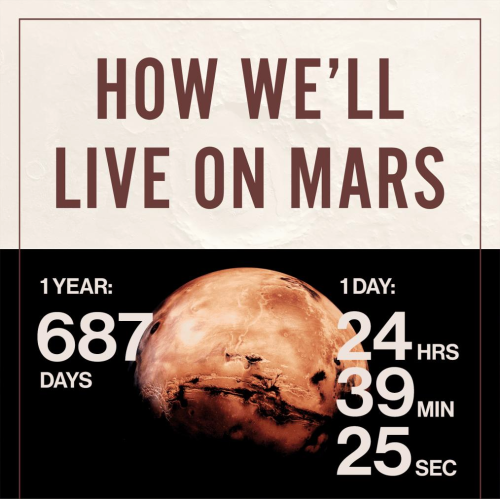
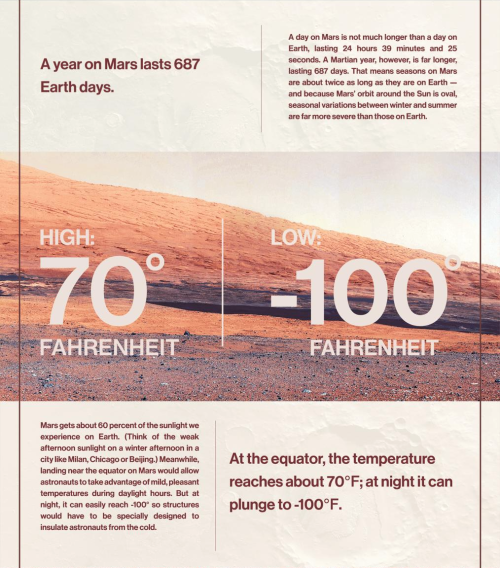
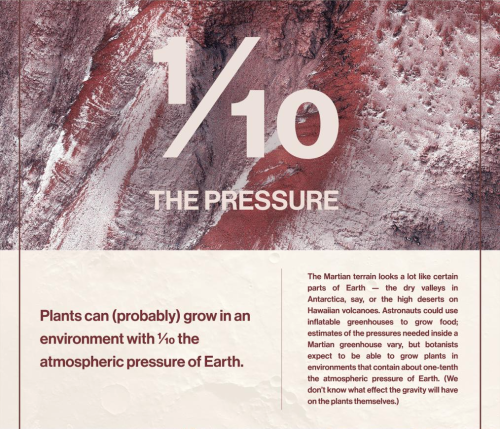
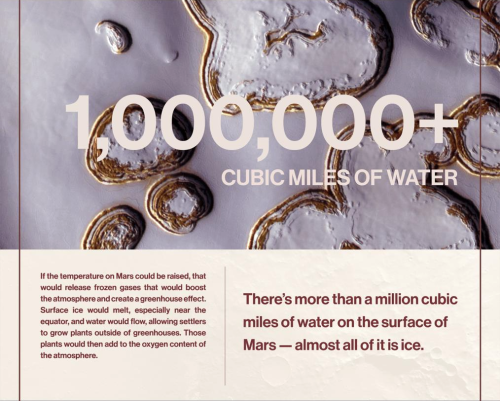
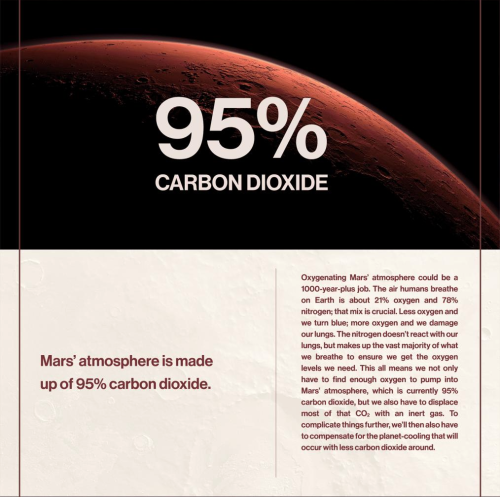
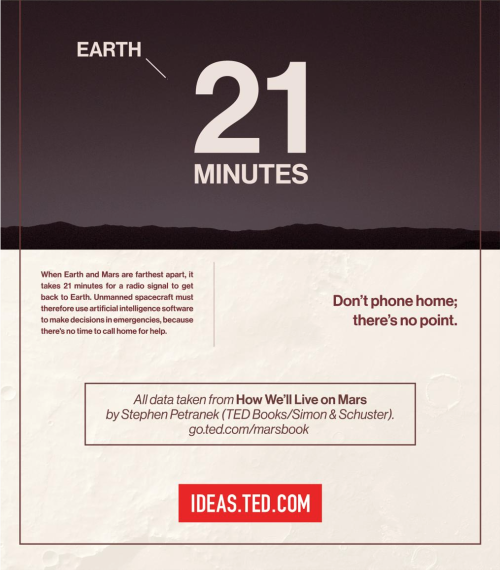
Life on Mars
Testing of the SLS Main Booster.

What strange world is this? Earth. In the foreground of the featured image are thePinnacles, unusual rock spires in Nambung National Park in Western Australia. Made of ancient sea shells (limestone), how these human-sizedpicturesque spires formed remains unknown. In the background, just past the end of the central Pinnacle, is a bright crescent Moon. The eerie glow around the Moon is mostly zodiacal light, sunlight reflected by dust grains orbiting between the planets in the Solar System. Arching across the top is the central band of our Milky Way Galaxy. Many famous stars and nebula are also visible in the background night sky. The featured 29-panel panorama was taken and composed last September after detailed planning that involved the Moon, the rock spires, and their corresponding shadows. Even so, the strong zodiacal light was a pleasant surprise. Image Credit: Michael Goh

Want to take a relaxing interstellar vacation? Consider visiting Kepler-16b, a world in a binary star system. In fact Kepler-16b is the first discovered circumbinary planet. It was detected in a wide 229 day orbit around a close pair of cool, low-mass stars some 200 light-years away. The parent stars eclipse one another in their orbits, observed as a dimming of starlight. But Kepler-16b itself was discovered by following the additional very slight dimming produced during its transits. Like sci-fi planet Tatooine of Star Wars fame, two suns would set over its horizon. Still, Kepler 16b is probably not a Tatooine-like terrestrial desert world. Instead, Kepler 16b is thought to be a cold, uninhabitable planet with about the mass of Saturn and a gaseous surface ... so plan to dress accordingly. Or, choose another Visions of the Future vacation destination. For image credit and copyright guidance, please visit the image websitehttp://antwrp.gsfc.nasa.gov/apod/ap160220.html
LIVE LONG AND PROSPER.....

I met her when I was 10 days old, and him in kindergarten. Now they’re married and I’m the happiest maid of honor ever. Congratulations @britmaack and Ben!
InSight Mission to Mars

Our InSight mission will place a fixed science outpost on Mars to study its deep interior. Findings and research from this project will address one of the most fundamental questions we have about planetary and solar system science – How in the world did these rocky planets form?
By investigating the interior structure and processes of Mars, the InSight mission will gain a better understanding of the evolutionary formation of planets, including Earth.
InSight will record Mars’ vital signs to learn more about the planet, including:

Seismic Activity:
A seismometer will be used to record the seismic activity on Mars. This will give us information on the crust, mantel and core; and the relationship between them.

Temperature:
A heat flow probe will be used to take Mars’ temperature and determine the change over the course of a full Martian year.

Reflexes:
By looking at how the rotation of Mars wobbles, we will better understand what the core size may be and its composition.

Launch for the InSight mission is scheduled for March 2016, and even though you can’t physically travel with the lander, you can send your name to the Red Planet onboard. Make sure to submit your name before Sept. 8!
Make sure to follow us on Tumblr for your regular dose of space: http://nasa.tumblr.com
The NASA “Worm” Logo
Just like many organizations, the style and logos can change over time. You are probably most familiar with our “meatball” logo. No, unfortunately this does not refer to the delicious food. This logo (below) is our most popular symbol, and dates back to 1959.
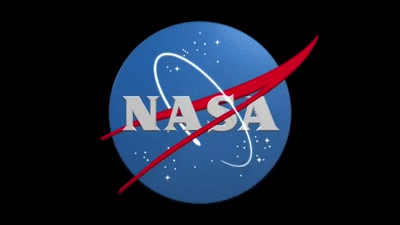
But, we’ve also had other insignia that represented our organization throughout the years.
The “worm” logo (below) was used by the agency from 1975 until 1992. The organization wanted to create a more “modern” logo, which resulted in the unique type style of the “worm” logo.

Even though this logo was retired in 1992, the Graphics Standards Manual is still available online HERE.
You can also read up about the emblems, logos and insignia used by NASA throughout the years in a new e-Book available for free HERE.
Make sure to follow us on Tumblr for your regular dose of space:http://nasa.tumblr.com

The arrangement of the spiral arms in the galaxy Messier 63, seen here in an image from the NASA/ESA Hubble Space Telescope, recall the pattern at the center of a sunflower. So the nickname for this cosmic object -- the Sunflower Galaxy -- is no coincidence. Discovered by Pierre Mechain in 1779, the galaxy later made it as the 63rd entry into fellow French astronomer Charles Messier's famous catalogue, published in 1781. The two astronomers spotted the Sunflower Galaxy's glow in the small, northern constellation Canes Venatici (the Hunting Dogs). We now know this galaxy is about 27 million light-years away and belongs to the M51 Group -- a group of galaxies, named after its brightest member, Messier 51, another spiral-shaped galaxy dubbed the Whirlpool Galaxy. Galactic arms, sunflowers and whirlpools are only a few examples of nature's apparent preference for spirals. For galaxies like Messier 63 the winding arms shine bright because of the presence of recently formed, blue-white giant stars and clusters, readily seen in this Hubble image. Image credit: ESA/Hubble & NASA Text credit: European Space Agency Hubble Space Telescope
'NASA's Hubble Telescope Detects ‘Sunscreen' Layer on Distant Planet': via #NASA_APP
Profile of a World War 2 Test Pilot
William Shatner pictured hours after the death of Leonard Nimoy @MailOnline
RIP

While flying over Boston, Leonard Nimoy’s birthplace, NASA Astronaut Terry Virts pays tribute to the Star Trek star http://nbcnews.to/1AUElvf
